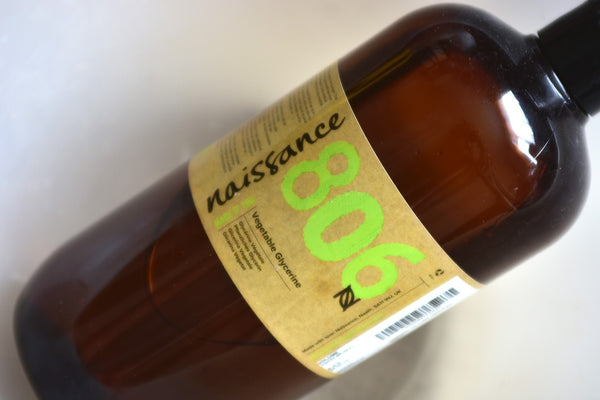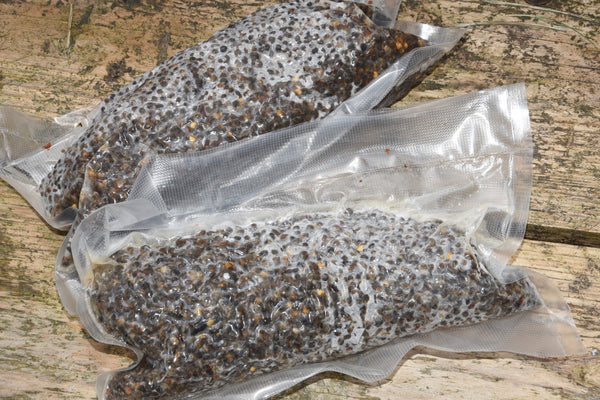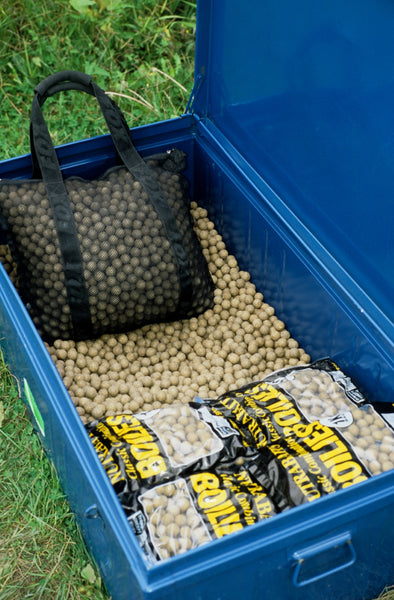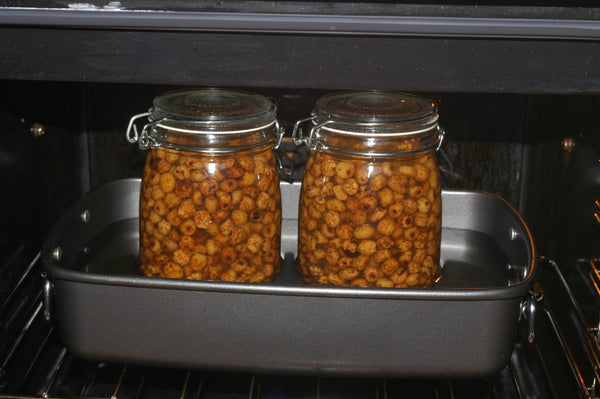
Yes, I know! that I have written before about extending the shelf life of your baits, but as I get plenty of queries asking how to do this, I thought it was worth doing another blog detailing some of the tricks I use to add to the longevity of my bait.
I'll start with the easiest; air-dried baits. Moisture is Public Enemy Number One as far as our boilies are concerned. It follows, therefore, that the easiest way of preserving your baits is by air-drying them. If you've not encountered this phrase before, it means simply that the finished bait is allowed to shed its moisture and this in turn helps prevent from taking hold the bacterium that degrades the bait. The simplest way to dry your bait is to place the boilies in an open weave container such as a vegetable try (see photo). Spread the baits out on the tray and place it in a warm room or perhaps the airing cupboard. Shake the tray from time to time to ensure that each is exposed to the warm air.

You can use the trays to defrost frozen bait but if there is full-on sunshine take care not to allow the baits to air-dry too quickly, as they may split open. Exposing the bait to gentle heat turning them frequently will ensure that the bait defrosts steadily and as it does so your boilies will reabsorb the attraction you built into them before they were frozen.

Glycerin is a natural preservative that is widely used in the bait industry to extend of stabilise the shelf life of fresh boiled baits. I add it initially in with the eggs as it lends a slight sweetness to the finished bait. I add 20ml to the eggs before making the bait, and then once it has dried post-boiling add a further 20ml to the finished bait. I put them in a dry bowl and pour the glycerin over then, then I roll the bait around in the bowl to give each bait a light coating of glycerin. This will add at least three months to the shelf life of most boiled bait. There are a few blogs about the use of glycerin elsewhere on the site. Here are a couple of links:
https://haiths.com/blogs/fishing-news/boiled-baits-and-glycerin-part-1?_pos=14&_sid=0b4bba027&_ss=r
https://haiths.com/blogs/fishing-news/boiled-baits-and-glycerin-part-2?_pos=13&_sid=0b4bba027&_ss=r

Vacuum packing fresh bait is a home roller's dream. There are a number of counter-top machines on the market that will vacuum-seal all types of bait and they will heat-seal the bag as well. They are ideal for making bait in advance of a session, a trip or even a season. No need for a freezer, vacuum-sealed bait will last two or three months longer than non-sealed. Mind you, there is no reason why you shouldn't freeze vacuum-sealed bait should you wish to extend its shelf life even more.

Hempseed should be sealed in small individual portions as it can take ages to de-frost a large bulk-frozen block of prepared hempseed. This is just one of the major drawback to freezing hempseed in bulk. Another is that the block tends to float!

In this photo you can see fresh, vacuum-sealed baits that are ready to be frozen or be stored ready for an extended session.

Shelf life boilies are very convenient and nowadays they are mostly made using more or less the same ingredients as the base mix. In fact, many anglers have found that the use of a 50/50 mix of both shelf life and air-dried boilies is actually better than using either type individually.

Virtually any hydrophobic (water-hating) substance can help preserve and extend the shelf life of fresh bait. Rice, for instance will draw moisture from within your boilies, and the longer they are surrounded with grains of rice, the drier and harder the baits will become.

Sugar has a similar effect. Simply use a colander to separate the sugar from the boilies. They can now be stored in dry conditions for an almost indefinite time.

Shelf life tiger nuts will last ages as long as the seal on the jar is not broken. CC Moore and Dynamite Baits both offer a range or shelf life particles, nut and particle blends.

Alternatively you can make your own shelf life particles by using the 'Bain-Marie' method.

For those of you who sent 'get well' messages in response to my last blog, many thanks for your good wishes. It'll soon be summer - shirt-sleeve carping - and I'll soon be busting a gut to get out on the bank again.
Follow the link below to discover my other blogs. Happy browsing!
Written by Ken Townley
https://haiths.com/search?q=Ken+Townley&options%5Bprefix%5D=last





